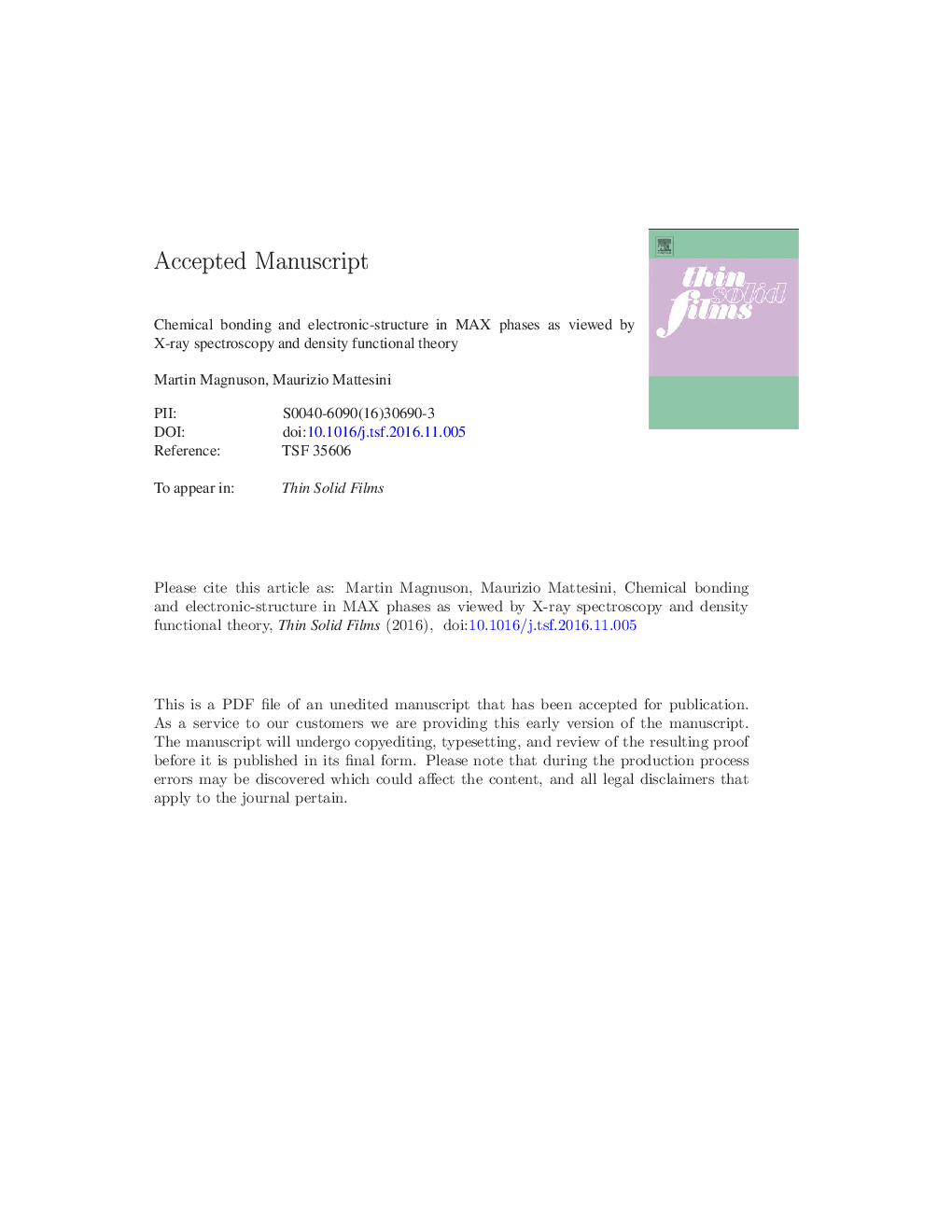| Article ID | Journal | Published Year | Pages | File Type |
|---|---|---|---|---|
| 5466393 | Thin Solid Films | 2017 | 71 Pages |
Abstract
This is a critical review of MAX-phase carbides and nitrides from an electronic-structure and chemical bonding perspective. This large group of nanolaminated materials is of great scientific and technological interest and exhibits a combination of metallic and ceramic features. These properties are related to the special crystal structure and bonding characteristics with alternating strong MC bonds in high-density MC slabs, and relatively weak MA bonds between the slabs. Here, we review the trend and relationship between the chemical bonding, conductivity, elastic and magnetic properties of the MAX phases in comparison to the parent binary MX compounds with the underlying electronic structure probed by polarized X-ray spectroscopy. Spectroscopic studies constitute important tests of the results of state-of-the-art electronic structure density functional theory that is extensively discussed and are generally consistent. By replacing the elements on the M, A, or X-sites in the crystal structure, the corresponding changes in the conductivity, elasticity, magnetism and other material properties make it possible to tailor the characteristics of this class of materials by controlling the strengths of their chemical bonds.
Related Topics
Physical Sciences and Engineering
Materials Science
Nanotechnology
Authors
Martin Magnuson, Maurizio Mattesini,
